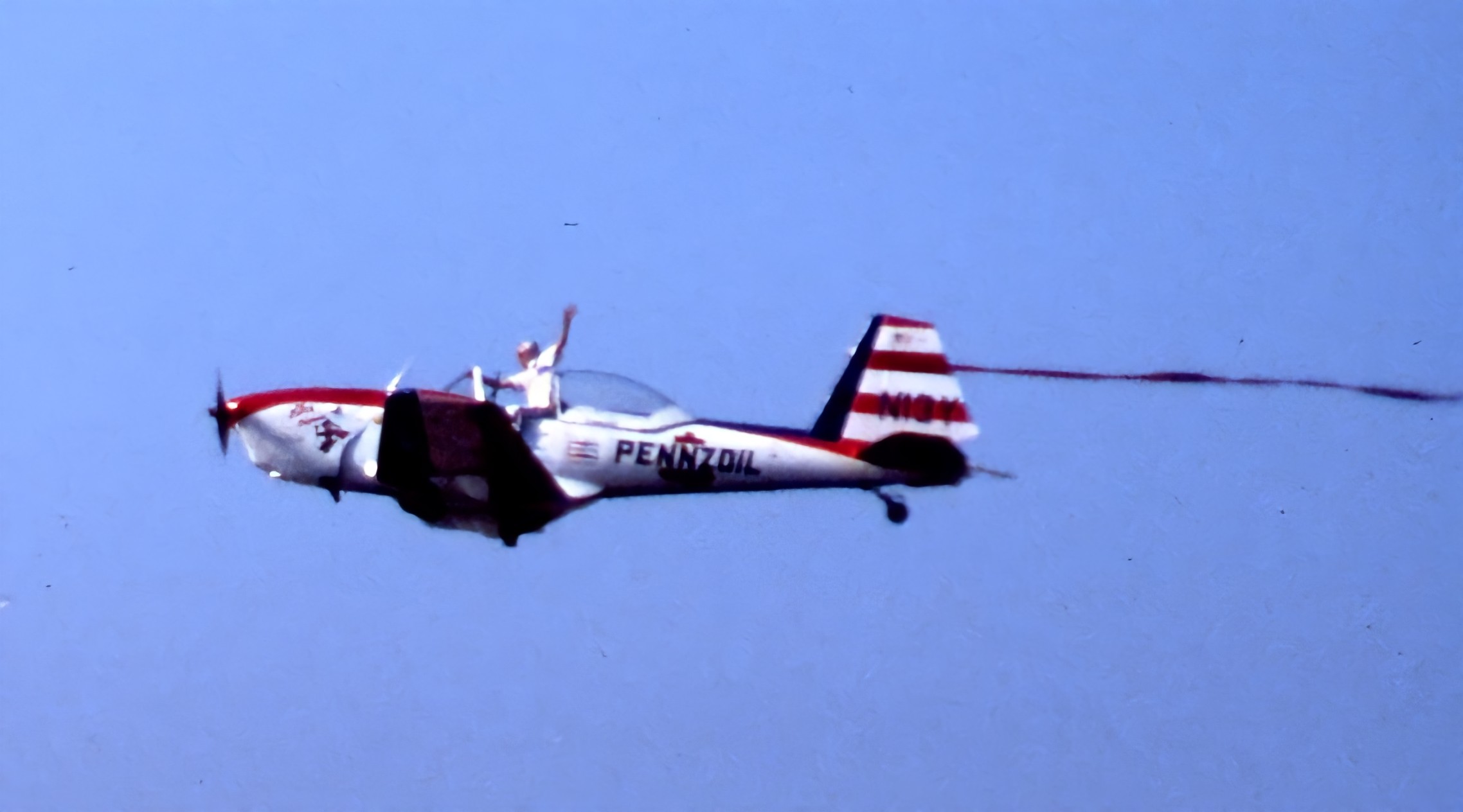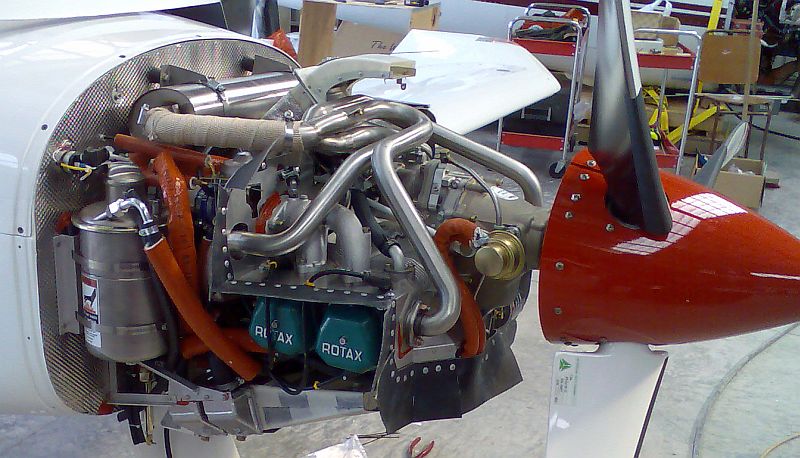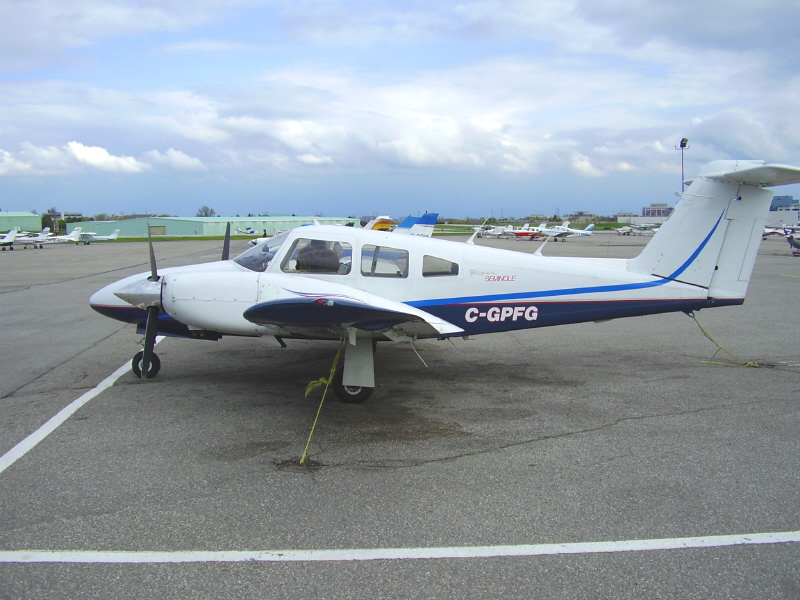|
Tech Aero TR 200
The Tech Aero TR 200 is a French homebuilt aerobatic aircraft that was designed and produced by Tech Aero of Glisolles, first flown in August 1988. When it was available the aircraft was supplied as a kit for amateur construction.Purdy, Don: ''AeroCrafter - Homebuilt Aircraft Sourcebook, Fifth Edition'', page 272. BAI Communications, 15 July 1998. Design and development Designed as a trainer for the unlimited class, the TR 200 features a cantilever low-wing, a two-seats-in-tandem enclosed cockpit under a bubble canopy, fixed conventional landing gear with wheel pants and a single engine in tractor configuration. The aircraft is made from wood. Its span wing has a wing area of . The cabin width is . The acceptable power range is and the standard engine used is the Lycoming AEIO-360 powerplant. The TR 200 has a typical empty weight of and a gross weight of , giving a useful load of . With full fuel of the payload for pilot, passenger and baggage is . The standard day, ... [...More Info...] [...Related Items...] OR: [Wikipedia] [Google] [Baidu] |
WikiProject Aircraft
A WikiProject, or Wikiproject, is a Wikimedia movement affinity group for contributors with shared goals. WikiProjects are prevalent within the largest wiki, Wikipedia, and exist to varying degrees within Wikimedia project, sister projects such as Wiktionary, Wikiquote, Wikidata, and Wikisource. They also exist in different languages, and translation of articles is a form of their collaboration. During the COVID-19 pandemic, CBS News noted the role of Wikipedia's WikiProject Medicine in maintaining the accuracy of articles related to the disease. Another WikiProject that has drawn attention is WikiProject Women Scientists, which was profiled by ''Smithsonian Magazine, Smithsonian'' for its efforts to improve coverage of women scientists which the profile noted had "helped increase the number of female scientists on Wikipedia from around 1,600 to over 5,000". On Wikipedia Some Wikipedia WikiProjects are substantial enough to engage in cooperative activities with outside organization ... [...More Info...] [...Related Items...] OR: [Wikipedia] [Google] [Baidu] |
Wheel Pants
An aircraft fairing is a structure whose primary function is to produce a smooth outline and reduce drag.Crane, Dale: ''Dictionary of Aeronautical Terms, Third Edition'', page 206. Aviation Supplies & Academics Inc, Newcastle Washington, 1997. These structures are covers for gaps and spaces between parts of an aircraft to reduce form drag and interference drag, and to improve appearance.Bingelis, Tony: ''The Sportplane Builder'', pages 261-265. Experimental Aircraft Association Aviation Foundation, 1979. Types On aircraft, fairings are commonly found on: ; Belly fairing : Also called a "ventral fairing", it is located on the underside of the fuselage between the main wings. It can also cover additional cargo storage or fuel tanks. ; Cockpit fairing : Also called a "cockpit pod", it protects the crew on ultralight trikes. Commonly made from fiberglass, it may also incorporate a windshield.Cliche, Andre: ''Ultralight Aircraft Shopper's Guide'' 8th Edition, page C-17. Cyb ... [...More Info...] [...Related Items...] OR: [Wikipedia] [Google] [Baidu] |
Aerobatic Aircraft
An aerobatic aircraft is an aerodyne (a heavier-than-air aircraft) used in aerobatics, both for flight exhibitions and aerobatic competitions. Most fall into one of two categories, aircraft used for training and by flight demonstration teams, which are often standard trainers or fighters, and aircraft especially designed for aerobatics, usually at the expense of other attributes, such as stability, carrying passengers or endurance. Dates are of first flight. Powered aircraft Australia * Victa/AESL Airtourer (1959) Belgium * Renard R.34 (1934) * Stampe SV.4 (1933) * Tipsy Nipper (Homebuilt - 1957) Brazil * Embraer EMB 312 Tucano (operated by the ''Esquadrilha da Fumaça'') (1980) * Embraer EMB 314 Super Tucano (operated by the ''Esquadrilha da Fumaça'') (2012) * Instituto de Pesquisas Tecnologicas IPT-16 Surubim (1959) * Neiva Universal (operated by the ''Esquadrilha da Fumaça'') (1966) * ACS-100 Sora (2008) * CEA-309 Mehari (2009) * Wega 180 (2013) * CEA-311 Aneq ... [...More Info...] [...Related Items...] OR: [Wikipedia] [Google] [Baidu] |
1980s French Sport Aircraft
__NOTOC__ Year 198 (CXCVIII) was a common year starting on Sunday (link will display the full calendar) of the Julian calendar. At the time, it was known as the Year of the Consulship of Sergius and Gallus (or, less frequently, year 951 '' Ab urbe condita''). The denomination 198 for this year has been used since the early medieval period, when the Anno Domini calendar era became the prevalent method in Europe for naming years. Events By place Roman Empire *January 28 **Publius Septimius Geta, son of Septimius Severus, receives the title of Caesar. **Caracalla, son of Septimius Severus, is given the title of Augustus. China *Winter – Battle of Xiapi: The allied armies led by Cao Cao and Liu Bei defeat Lü Bu; afterward Cao Cao has him executed. By topic Religion * Marcus I succeeds Olympianus as Patriarch of Constantinople (until 211). Births * Lu Kai (or Jingfeng), Chinese official and general (d. 269) * Quan Cong, Chinese general and advisor (d. ... [...More Info...] [...Related Items...] OR: [Wikipedia] [Google] [Baidu] |
Tech Aero Aircraft
Tech or The Tech may refer to: * An abbreviation of technology or technician * Tech Dinghy, an American sailing dinghy developed at MIT * Tech (mascot), the mascot of Louisiana Tech University, U.S. * Tech (river), in southern France * "Tech" (''Smash''), a 2012 episode of TV series ''Smash'' * ''The Tech'' (newspaper), newspaper at the Massachusetts Institute of Technology * The Tech Interactive, formerly The Tech Museum of Innovation, or The Tech, a museum in San Jose, California, U.S. * Tech Tower, a building at the Georgia Institute of Technology, Atlanta, Georgia, U.S. See also * USS ''Tech Jr.'' (SP-1761), a United States Navy patrol boat in commission in 1917 * USS ''Tech III'' (SP-1055), a United States Navy patrol boat in commission in 1917 * Technical (other) *Technique (other) Technique or techniques may refer to: Music * The Techniques, a Jamaican rocksteady vocal group of the 1960s *Technique (band), a British female synth pop band in the ... [...More Info...] [...Related Items...] OR: [Wikipedia] [Google] [Baidu] |
List Of Aerobatic Aircraft
An aerobatic aircraft is an aerodyne (a heavier-than-air aircraft) used in aerobatics, both for flight exhibitions and aerobatic competitions. Most fall into one of two categories, aircraft used for training and by flight demonstration teams, which are often standard trainers or fighters, and aircraft especially designed for aerobatics, usually at the expense of other attributes, such as stability, carrying passengers or endurance. Dates are of first flight. Powered aircraft Australia * Victa/AESL Airtourer (1959) Belgium * Renard R.34 (1934) * Stampe SV.4 (1933) * Tipsy Nipper (Homebuilt - 1957) Brazil * Embraer EMB 312 Tucano (operated by the ''Esquadrilha da Fumaça'') (1980) * Embraer EMB 314 Super Tucano (operated by the ''Esquadrilha da Fumaça'') (2012) * Instituto de Pesquisas Tecnologicas IPT-16 Surubim (1959) * Neiva Universal (operated by the ''Esquadrilha da Fumaça'') (1966) * ACS-100 Sora (2008) * CEA-309 Mehari (2009) * Wega 180 (2013) * CEA-311 Anequ ... [...More Info...] [...Related Items...] OR: [Wikipedia] [Google] [Baidu] |
Constant Speed Propeller
In aeronautics, a variable-pitch propeller is a type of propeller (airscrew) with blades that can be rotated around their long axis to change the blade pitch. A controllable-pitch propeller is one where the pitch is controlled manually by the pilot. Alternatively, a constant-speed propeller is one where the pilot sets the desired engine speed ( RPM), and the blade pitch is controlled automatically without the pilot's intervention so that the rotational speed remains constant. The device which controls the propeller pitch and thus speed is called a propeller governor or constant speed unit. Reversible propellers are those where the pitch can be set to negative values. This creates reverse thrust for braking or going backwards without the need to change the direction of shaft revolution. Some aircraft have ground-adjustable propellers, however these are not considered variable-pitch. These are typically found only on light aircraft and microlights. Purpose When an aircraft is ... [...More Info...] [...Related Items...] OR: [Wikipedia] [Google] [Baidu] |
Aircraft Engine
An aircraft engine, often referred to as an aero engine, is the power component of an aircraft propulsion system. Most aircraft engines are either piston engines or gas turbines, although a few have been rocket powered and in recent years many small UAVs have used electric motors. Manufacturing industry In commercial aviation the major Western manufacturers of turbofan engines are Pratt & Whitney (a subsidiary of Raytheon Technologies), General Electric, Rolls-Royce, and CFM International (a joint venture of Safran Aircraft Engines and General Electric). Russian manufacturers include the United Engine Corporation, Aviadvigatel and Klimov. Aeroengine Corporation of China was formed in 2016 with the merger of several smaller companies. The largest manufacturer of turboprop engines for general aviation is Pratt & Whitney. General Electric announced in 2015 entrance into the market. Development history * 1848: John Stringfellow made a steam engine for a 10-foot ... [...More Info...] [...Related Items...] OR: [Wikipedia] [Google] [Baidu] |
Four Stroke
A four-stroke (also four-cycle) engine is an internal combustion (IC) engine in which the piston completes four separate strokes while turning the crankshaft. A stroke refers to the full travel of the piston along the cylinder, in either direction. The four separate strokes are termed: #Intake: Also known as induction or suction. This stroke of the piston begins at top dead center (T.D.C.) and ends at bottom dead center (B.D.C.). In this stroke the intake valve must be in the open position while the piston pulls an air-fuel mixture into the cylinder by producing vacuum pressure into the cylinder through its downward motion. The piston is moving down as air is being sucked in by the downward motion against the piston. #Compression: This stroke begins at B.D.C, or just at the end of the suction stroke, and ends at T.D.C. In this stroke the piston compresses the air-fuel mixture in preparation for ignition during the power stroke (below). Both the intake and exhaust valves are close ... [...More Info...] [...Related Items...] OR: [Wikipedia] [Google] [Baidu] |
Fuel-injected
Fuel injection is the introduction of fuel in an internal combustion engine, most commonly automotive engines, by the means of an injector. This article focuses on fuel injection in reciprocating piston and Wankel rotary engines. All compression-ignition engines (e.g. diesel engines), and many spark-ignition engines (i.e. petrol engines, such as Otto or Wankel), use fuel injection of one kind or another. Mass-produced diesel engines for passenger cars (such as the Mercedes-Benz OM 138) became available in the late 1930s and early 1940s, being the first fuel-injected engines for passenger car use. In passenger car petrol engines, fuel injection was introduced in the early 1950s and gradually gained prevalence until it had largely replaced carburettors by the early 1990s. The primary difference between carburetion and fuel injection is that fuel injection atomizes the fuel through a small nozzle under high pressure, while a carburettor relies on suction created by intake air ... [...More Info...] [...Related Items...] OR: [Wikipedia] [Google] [Baidu] |
Lycoming AEIO-360
The Lycoming O-360 is a family of four-cylinder, direct-drive, horizontally opposed, air-cooled, piston aircraft engines. Engines in the O-360 series produce between 145 and 225 horsepower (109 to 168 kW), with the basic O-360 producing 180 horsepower. The engine family has been installed in thousands of aircraft, including the Cessna 172, Piper Cherokee/Archer, Grumman Tiger, and many home-built types. It has a factory rated time between overhaul (TBO) of 2000 hours or twelve years. O-360 family engines are also widely used in airboats, most notably in the Hurricane Aircats used by the US Army during the Vietnam War. The first O-360 certified was the A1A model, certified on 20 July 1955 to United States CAR 13 effective March 5, 1952 as amended by 13-1 and 13-2. The Lycoming IO-390 is an O-360 which has had its cylinder bore increased by , developing . Series The O-360 family of engines comprises 167 different models with 12 different prefixes. All have a displaceme ... [...More Info...] [...Related Items...] OR: [Wikipedia] [Google] [Baidu] |





